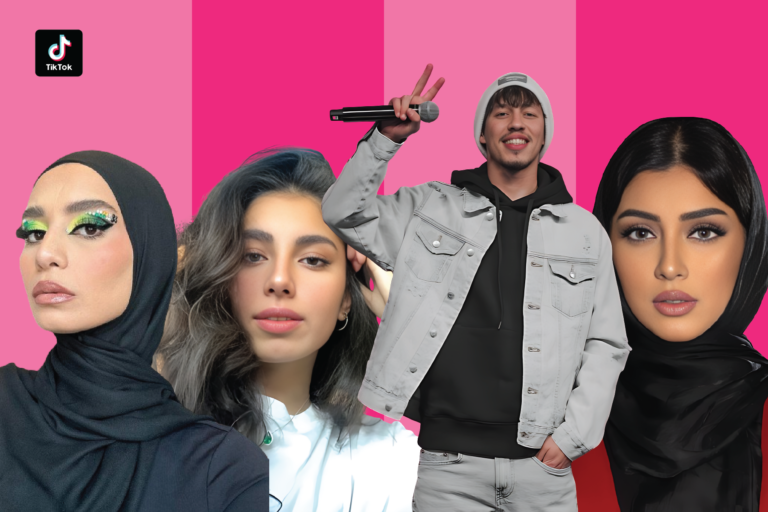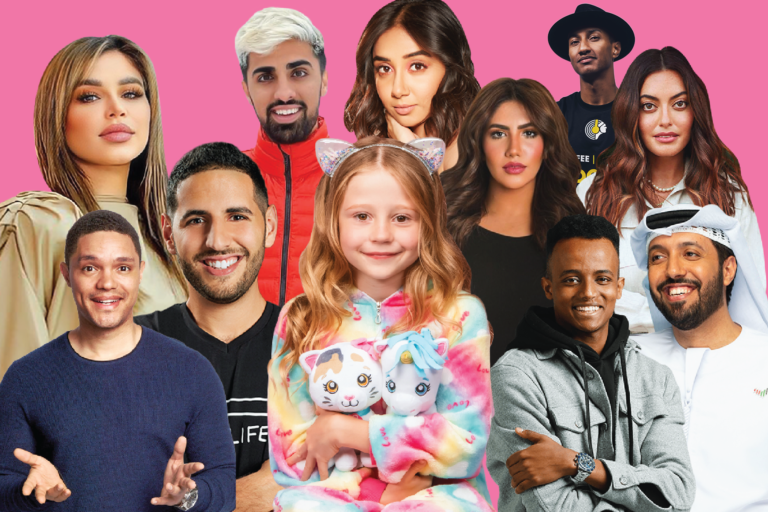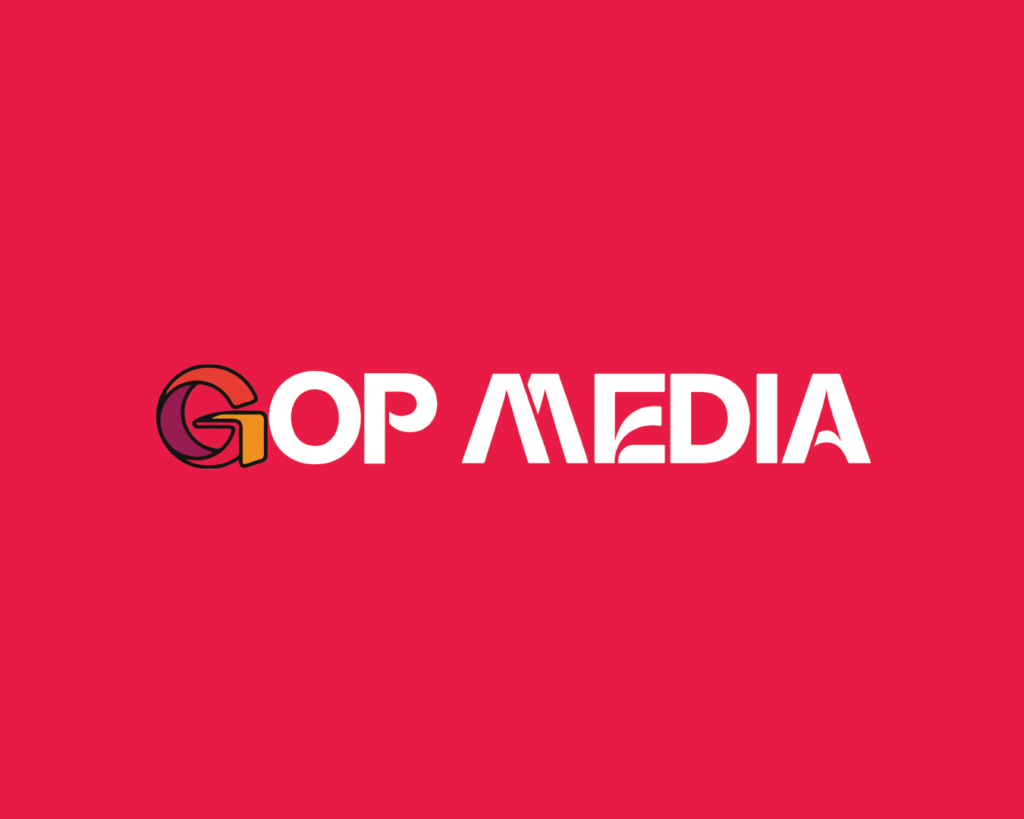Social media is now a big part of our lives. It’s changed how we connect with others and given content creators and influencers new ways to show their talent and reach more people.
Instagram and TikTok are two platforms that have become very popular among content creators. While both platforms offer great opportunities for digital marketing and influencer management agencies, there are key differences between Instagram influencers and TikTok influencers.
Defining Instagram Influencers
Instagram influencers are individuals who have built a significant following on the Instagram platform by creating and sharing engaging content. They have established themselves as experts or authorities in their respective niches and have a loyal fan base. These influencers leverage their popularity to collaborate with brands and promote products or services to their followers.
Defining TikTok Influencers
TikTok influencers, on the other hand, are content creators who have gained a massive following on the TikTok platform. TikTok is known for its short-form videos, and these influencers excel in creating entertaining and engaging content within the platform’s constraints. They often showcase their creativity, humor, and talent through lip-syncing, dancing, and comedy skits.
Comparing Instagram and TikTok Influencers
The main difference between an Instagram influencer and a TikTok influencer lies in the platforms they primarily use for their content.
Instagram influencers primarily use the Instagram platform to create and share content in various forms, such as photos, videos, and stories. They typically have a larger focus on curated images and longer-form captions. Instagram influencers often work with brands to promote products or services through sponsored posts or collaborations. They may have a more established presence and following on Instagram.
On the other hand, TikTok influencers primarily use the TikTok platform, which is known for short-form video content. TikTok influencers create, edit, and share creative videos, often using popular audio tracks, dance routines, or challenges. TikTok influencers tend to focus more on entertainment and creativity, with a more casual and authentic approach. They may have a younger demographic following and a more rapidly growing presence on TikTok.
While both Instagram and TikTok influencers can have a significant impact on their audience and collaborate with brands, the platforms they use and the style of content they create can differ significantly.
When it comes to marketing and ad influencer marketing, the main difference between an Instagram influencer and a TikTok influencer lies in the type of content and audience they appeal to.
Instagram is a visual platform for images, carousels, short-form videos like Reels, long-form videos like IGTV, streaming like Live, listicles like Guides, and ephemeral content like Stories. Instagram influencers focus more on curated images and longer-form captions, often featuring a more established and older audience. Brands can partner with Instagram influencers for sponsored posts or collaborations to reach a broader demographic.
While both Instagram and TikTok influencers are content creators who have a significant following, there are several key differences between the two:
- Audience Demographics: Instagram has a more diverse user base, with a wide range of age groups and interests. It is popular among millennials, young adults, and even older demographics. On the other hand, TikTok has gained immense popularity among Gen Z users, with a majority of its audience falling in the 16-24 age group.
- Content Format: Instagram influencers primarily focus on sharing curated photos, videos, and stories. They often showcase their lifestyle, fashion, travel, or expertise in a specific field. TikTok influencers, on the other hand, create short videos that are often humorous, entertaining, and relatable. They leverage the platform’s editing tools and effects to create engaging content.
- Engagement and Reach: Instagram influencers have a higher average engagement rate compared to TikTok influencers. This is because Instagram allows for longer captions, comments, and direct messaging, which encourages more interaction between influencers and their followers. However, TikTok influencers often have a higher reach due to the platform’s algorithm, which promotes content to a wider audience.
- Monetization Opportunities: Instagram influencers have various monetization opportunities, including sponsored posts, brand collaborations, affiliate marketing, and selling their own products or services. TikTok influencers, on the other hand, have limited monetization options, with brand collaborations being the primary source of income.
- Brand Collaborations: Both Instagram and TikTok influencers collaborate with brands to promote products or services. However, Instagram influencers often focus on creating visually appealing content that aligns with the brand’s aesthetic. TikTok influencers, on the other hand, excel in creating entertaining and engaging videos that resonate with their audience.
- Influencer Marketing Strategies: When it comes to influencer marketing, brands need to consider the platform’s target audience, content preferences, and engagement metrics. Instagram influencers are often used for long-term brand partnerships and creating high-quality content. TikTok influencers, on the other hand, are effective for creating viral and short-term campaigns that generate immediate engagement.
- Longevity and Sustainability: Instagram influencers have been around for a longer time and have established themselves as trusted authorities in their niches. They have built a loyal following and often have a more sustainable career as influencers. TikTok influencers, on the other hand, are relatively new and may face challenges in maintaining their popularity and relevance in the long run.
- Challenges and Drawbacks: Working with Instagram influencers can sometimes be challenging due to the high competition and saturation in certain niches. On the other hand, collaborating with TikTok influencers may come with drawbacks such as limited brand integration opportunities and the need for constant creativity to keep up with the platform’s trends.
Audience Demographics
Understanding the audience demographics of Instagram and TikTok is crucial for brands and marketers looking to collaborate with influencers on these platforms.
Demographic differences between Instagram and TikTok audiences
- Instagram: The platform has a diverse user base, with a significant presence of millennials and young adults. It also attracts older demographics, making it a versatile platform for reaching a wide range of audiences.
- TikTok: TikTok’s audience is predominantly Gen Z, with a majority falling in the 16-24 age group. The platform’s content is tailored to appeal to younger audiences, with trends and challenges that resonate with this demographic.
Understanding the Instagram audience demographics
- Age: Instagram has a wide age range, with users from teenagers to older adults. However, the largest age group on the platform is between 25-34 years old.
- Gender: Instagram has a relatively equal gender distribution, with slightly more female users than male users.
- Interests: Instagram users are interested in various topics, including fashion, travel, fitness, food, and lifestyle. The platform allows users to follow accounts that align with their interests, creating a personalized feed.

Understanding the TikTok audience demographics
- Age: TikTok’s primary audience consists of Gen Z users, with a majority falling in the 16-24 age group. However, the platform is also gaining popularity among older demographics.
- Gender: TikTok has a relatively equal gender distribution, with slightly more female users than male users.
- Interests: TikTok users are interested in a wide range of content, including dance, comedy, lip-syncing, challenges, and trends. The platform’s algorithm tailors the content to each user’s preferences, creating a personalized feed.

Content Format
The content format on Instagram and TikTok differs significantly, catering to the unique features and user preferences of each platform.
Types of content formats on Instagram
- Photos: Instagram is known for its visually appealing photos. Influencers often share high-quality images that showcase their lifestyle, fashion, travel, or expertise in a specific field.
- Videos: Instagram allows users to share videos of up to 60 seconds in length. Influencers often create informative or entertaining videos that resonate with their audience.
- Stories: Instagram Stories are short-lived posts that disappear after 24 hours. Influencers use this feature to share behind-the-scenes content, daily updates, or interactive polls with their followers.
Types of content formats on TikTok
- Short-form videos: TikTok is primarily known for its short-form videos, with a maximum length of 60 seconds. Influencers create engaging and entertaining videos that often involve lip-syncing, dancing, comedy skits, or challenges.
- Duets and collaborations: TikTok allows users to duet with other videos or collaborate with other creators. This feature encourages interaction and creativity among influencers.
- Effects and filters: TikTok offers a wide range of effects, filters, and editing tools that influencers can use to enhance their videos and make them more engaging.
Comparing content formats on Instagram and TikTok
While both platforms offer various content formats, Instagram focuses more on curated photos and videos, while TikTok emphasizes short-form videos and user-generated content. Instagram content tends to be more polished and aesthetically pleasing, while TikTok content is often more spontaneous, creative, and relatable.
Engagement and Reach
Engagement and reach are essential metrics for measuring the success of influencer marketing campaigns on Instagram and TikTok.
Engagement metrics on Instagram
- Likes: Instagram users can like posts to show their appreciation for the content. The number of likes a post receives is an indication of its popularity and engagement.
- Comments: Comments allow users to engage in conversations with the influencer and other followers. A high number of comments indicates active engagement and interest in the content.
- Shares: Instagram users can share posts to their own feed or stories, increasing the reach and visibility of the content. Shares are a valuable metric for measuring the virality of a post.
Engagement metrics on TikTok
- Hearts: TikTok users can give hearts to videos they enjoy, similar to liking a post on Instagram. The number of hearts a video receives indicates its popularity and engagement.
- Comments: TikTok users can comment on videos to engage with the influencer and other viewers. Comments are a valuable metric for measuring the level of interaction and interest in the content.
- Shares: TikTok users can share videos to their own feed or with their followers, increasing the reach and visibility of the content. Shares are a key metric for measuring the virality of a video.
Comparing engagement on Instagram and TikTok
While Instagram influencers often have a higher average engagement rate, TikTok influencers can achieve higher reach and virality due to the platform’s algorithm. TikTok’s content discovery features, such as the “For You” page, expose users to a wider range of content, increasing the chances of engagement and viral success.

Monetization Opportunities
Both Instagram and TikTok influencers have various opportunities to monetize their content and collaborations with brands.
Monetization strategies for Instagram influencers
- Sponsored posts: Instagram influencers can collaborate with brands to create sponsored content. They promote products or services through posts, stories, or videos, often including a caption or tag to disclose the partnership.
- Brand collaborations: Influencers can partner with brands for long-term collaborations, becoming brand ambassadors or creating exclusive content for the brand.
- Affiliate marketing: Instagram influencers can earn a commission by promoting products or services through affiliate links. They receive a percentage of the sales generated through their unique affiliate links.
- Selling products or services: Influencers can create and sell their own products or services, leveraging their expertise and influence to attract customers.
Monetization strategies for TikTok influencers
- Brand collaborations: TikTok influencers collaborate with brands to create sponsored content, similar to Instagram influencers. They often create entertaining and engaging videos that promote the brand’s products or services.
- Livestreaming: TikTok influencers can host live streams where they interact with their audience in real-time. During these live streams, influencers can receive virtual gifts from their viewers, which can be converted into monetary rewards.
- Merchandise sales: TikTok influencers can create and sell their own merchandise, leveraging their popularity and unique style to attract fans.
Comparing monetization opportunities on Instagram and TikTok
Instagram influencers have a wider range of monetization opportunities, including sponsored posts, brand collaborations, affiliate marketing, and selling their own products or services. TikTok influencers, on the other hand, primarily rely on brand collaborations and monetization through livestreaming and merchandise sales. However, as TikTok continues to grow and evolve, we can expect more monetization opportunities to become available for TikTok influencers.
Brand Collaborations
Collaborating with influencers can be a highly effective marketing strategy for brands looking to reach their target audience. Both Instagram and TikTok influencers offer unique benefits for brand collaborations.
Benefits of brand collaborations with Instagram influencers
- Reach a diverse audience: Instagram influencers have a diverse user base, allowing brands to reach a wide range of demographics and interests.
- High-quality content: Instagram influencers often create visually appealing and high-quality content that aligns with the brand’s aesthetic. This can enhance the brand’s image and attract more engagement from followers.
- Long-term partnerships: Instagram influencers are often used for long-term brand partnerships, allowing brands to build a strong and consistent presence on the platform.
Benefits of brand collaborations with TikTok influencers
- Engaging and relatable content: TikTok influencers excel in creating entertaining and relatable content that resonates with their audience. This can help brands establish a more personal and authentic connection with their target audience.
- Viral potential: TikTok’s algorithm promotes content to a wider audience, increasing the chances of a brand collaboration going viral and reaching a large number of users.
- Trend-setting: TikTok influencers often set trends and drive popular culture. Collaborating with TikTok influencers can help brands stay relevant and tap into the latest trends.
Comparing brand collaborations on Instagram and TikTok
While both platforms offer benefits for brand collaborations, the choice between Instagram and TikTok depends on the brand’s target audience, content preferences, and marketing objectives. Brands looking for a visually appealing and diverse audience may find Instagram influencers more suitable, while those seeking viral potential and trend-setting may prefer TikTok influencers.
TikTok vs. Instagram: the Major Differences for Your Brand
Here are the main differences between Instagram influencers and TikTok influencers when it comes to influencer marketing:
Instagram Influencers:
- Polished content: Instagram is known for its highly curated and polished content, making it a suitable platform for brands with a polished aesthetic.
- Favored by Millennials and Gen Zers: Instagram has a large audience of Millennials and Gen Zers, making it a popular choice for brands targeting these demographics.
- Established in influencer marketing: Instagram has been around for a longer time and has been home to many successful influencer marketing campaigns, making it a familiar and trusted platform for brands.
- Great for building relationships: Instagram is ideal for creating a sense of community and building relationships with audiences, making it suitable for influencer marketing.
TikTok Influencers:
- Raw and authentic content: TikTok is known for its raw and authentic content, which can be more suitable for brands looking for a less polished and potentially more authentic approach.
- Younger audience: TikTok is popular among younger audiences, making it a good choice for brands looking to reach this demographic.
- More creative and entertaining: Influencers surveyed considered TikTok to be the more creative platform, which can be a positive aspect for brands looking to create fun and engaging content.
- Lower influencer fees: Influencer fees on TikTok tend to be lower than on Instagram due to the platform’s younger and less established user base.
Influencer Marketing Strategies
When implementing influencer marketing strategies, brands need to consider several factors to ensure the success of their campaigns.
Effective influencer marketing strategies
- Define clear objectives: Brands should clearly define their marketing objectives and align them with the influencer’s audience and content.
- Authenticity and alignment: It is crucial to collaborate with influencers whose values and content align with the brand’s image and target audience. Authenticity is key to building trust and credibility with the influencer’s followers.
- Micro-influencers: Consider working with micro-influencers who have a smaller but highly engaged and niche audience. They often have a more personal connection with their followers and can generate higher engagement rates.
Measuring the success of influencer marketing
- Engagement metrics: Monitor the engagement metrics such as likes, comments, shares, and views to measure the success of influencer collaborations. These metrics indicate the level of interest and interaction from the influencer’s audience.
- Conversion rates: Track the conversion rates of influencer-generated traffic or sales to measure the impact of influencer marketing on the brand’s bottom line.
- Brand sentiment: Monitor the sentiment and feedback from the influencer’s audience to gauge the impact of the collaboration on the brand’s reputation and perception.
Building long-term relationships with influencers
Building long-term relationships with influencers can be beneficial for both brands and influencers. It allows for consistent and authentic content creation, increased brand loyalty, and a deeper understanding of the target audience.
Longevity and Sustainability
The longevity and sustainability of Instagram and TikTok influencers differ due to various factors.
Longevity of Instagram influencers
Instagram influencers have been around for a longer time and have established themselves as trusted authorities in their niches. They have built a loyal following and often have a more sustainable career as influencers. However, the high competition and saturation in certain niches can pose challenges for new influencers trying to break into the platform.
Sustainability of TikTok influencers
TikTok influencers are relatively new and may face challenges in maintaining their popularity and relevance in the long run. The platform’s trends and content preferences constantly evolve, requiring influencers to adapt and stay creative to keep up with the changing landscape. However, TikTok’s growing user base and viral potential offer opportunities for sustainable success for those who can consistently create engaging content.
Comparing the long-term impact of Instagram and TikTok influencers
While Instagram influencers have a more established presence and sustainable career opportunities, TikTok influencers have the advantage of tapping into a rapidly growing platform with high viral potential. Both platforms offer unique opportunities for content creators and brands, and the choice between the two depends on the brand’s target audience, marketing objectives, and content preferences.
Challenges and Drawbacks
Working with influencers on Instagram and TikTok comes with its own set of challenges and drawbacks.
Challenges of working with Instagram influencers
- High competition: Instagram has a large number of influencers, making it a highly competitive space. Brands may find it challenging to stand out and collaborate with influencers who align with their values and target audience.
- Saturation in certain niches: Some niches on Instagram, such as fashion, beauty, and fitness, are highly saturated with influencers. Brands may struggle to find unique and authentic influencers in these popular niches.
Drawbacks of collaborating with TikTok influencers
- Limited brand integration opportunities: TikTok’s short-form video format may limit the opportunities for seamless brand integration within the content. Brands may need to be creative in finding ways to incorporate their products or services effectively.
- Constant need for creativity: TikTok’s fast-paced and trend-driven nature requires influencers to constantly come up with new and creative content to keep their audience engaged. This can be challenging for influencers who may face creative burnout.
Comparison of challenges and drawbacks between Instagram and TikTok influencers
While Instagram influencers face challenges related to high competition and saturation in certain niches, TikTok influencers may face limitations in brand integration opportunities and the need for constant creativity. Brands should consider these factors when choosing the platform and influencers for their influencer marketing campaigns.
Comparison of Instagram and TikTok influencers
Let’s compare Instagram and TikTok influencers based on key metrics:
Comparison of influencer reach on Instagram and TikTok
- Instagram influencers often have a higher average engagement rate due to the platform’s features that encourage interaction, such as longer captions, comments, and direct messaging.
- TikTok influencers can achieve higher reach and virality due to the platform’s algorithm, which promotes content to a wider audience through the “For You” page.
Comparison of engagement metrics on Instagram and TikTok
- Instagram influencers receive likes, comments, and shares on their posts, indicating the level of engagement and interest from their followers.
- TikTok influencers receive hearts, comments, and shares on their videos, indicating the popularity and engagement of their content.
Comparison of monetization opportunities on Instagram and TikTok
- Instagram influencers have a wider range of monetization opportunities, including sponsored posts, brand collaborations, affiliate marketing, and selling their own products or services.
- TikTok influencers primarily rely on brand collaborations and monetization through livestreaming and merchandise sales. However, as TikTok continues to evolve, we can expect more monetization opportunities to become available.
Choosing the right platform
When choosing between Instagram and TikTok for influencer marketing campaigns, brands need to consider the target audience, content preferences, and marketing objectives.
The target audience on Instagram
- Instagram has a diverse user base, with a wide range of age groups and interests. It is popular among millennials, young adults, and even older demographics.
- Brands targeting a diverse audience or specific age groups can benefit from collaborating with Instagram influencers.
The target audience on TikTok
- TikTok’s primary audience consists of Gen Z users, with a majority falling in the 16-24 age group. The platform’s content is tailored to appeal to younger audiences.
- Brands targeting Gen Z or seeking to tap into the latest trends and viral potential can benefit from collaborating with TikTok influencers.
Content preferences on Instagram and TikTok
- Instagram users are interested in various topics, including fashion, travel, fitness, food, and lifestyle. The platform allows users to follow accounts that align with their interests, creating a personalized feed.
- TikTok users are interested in a wide range of content, including dance, comedy, lip-syncing, challenges, and trends. The platform’s algorithm tailors the content to each user’s preferences, creating a personalized feed.
Conclusion
In conclusion, Instagram influencers and TikTok influencers offer unique opportunities for brands and marketers in the world of influencer marketing. While Instagram influencers focus on curated photos and videos, TikTok influencers excel in creating short-form videos that are entertaining and relatable. Both platforms have their own set of benefits, challenges, and monetization opportunities. The choice between Instagram and TikTok depends on the brand’s target audience, content preferences, and marketing objectives. By understanding the key differences and similarities between Instagram and TikTok influencers, brands can make informed decisions and build effective influencer marketing strategies.





